Genuine leather
Contents
Genuine leather
End users often don’t know if the items they purchased are made from "genuine leather" and, if it is leather (see What materials can be called leather?), what kind of leather it is. It would be helpful to provide clear identification of the types of leather and also to know the correct way to clean and maintain it.
Leather is produced all over the world according to different standards. Therefore, it would be desirable if detailed information like animal species, the country of origin and the place of tanning were also provided. This would create transparency and also give the consumer better options to be able to distinguish leather quality.
Unfortunately, there is no such comprehensive marking of leather objects for end users.
Typical labelling of leather products.
The leather skin symbol
The shape of an animal skin is commonly used as a symbol for leather products and for leather-related themes and businesses. It is often used as an ornamental element in brochures, company logos, product labels or websites. Furthermore, manufacturers of leather clothing and leather shoes use the symbol with "genuine leather" written on it to point out that the product satisfies the requirements for the genuine leather label and does not consist of other materials.
Extreme examples for false declarations. It is leatherette with leather fibres glued on the reverse.
Use of the leather logo
The leather logo is not a protected symbol. Anyone can design and use a leather symbol. A copy of an existing leather logo is not permitted. Therefore, an own leather symbol should always be designed to avoid disputes.
Symbol for the identification of a product made of genuine leather. - Leather logo of the Lederzentrum GmbH. - Labelling for leather shoes.
Special features of leather shoes
By law in the European Union, there are rules on the exact marking of materials in shoes. Distributors of shoes (sandals, closed shoes, boots) are under obligation to indicate the processed materials on sale. In text form or as pictograms, readable, durable, well visible, printed, embossed, glued or otherwise attached. Minimum one object of a pair must be marked. The responsibility of ensuring this system is followed lies mainly on EU importers and EU producers, but also on the entire shoe trade.
- Directive 94/11/EC (European standard): Directive of Euorpean Parliament and Counciel on the approximation of the laws, regulations and administrative provisions of the Member States relating to labelling of the materials used in the main components of footwear for sale to the consumer.
Mandatory labelling in footwear.
The following components of a shoe must be marked regarding to the used material:
- Image 1: Upper: The upper outer material.
- Image 2: Lining and insole: The upper and lower materials inside the shoe.
- Image 3: Sole: The outer sole is the contact material to the floor which wears off. The specified material must make up 80% of the complete volume and surface of the materials processed. If several materials are processed (e.g. leather and textile as upper material), the main materials must be specified.
The following materials are distinguished:
Image 1: Leather: "Leather" is from hides and skins with the original fibre structure intact. Materials which are produced from dissolved or crushed leather fibres and processed into sheets are not "leather". Any colour film or layer applied on the surface of leather cannot be thicker than 0.15 mm.
Image 2: Coated leather: Coated leather is leather, where a painting or a film is thicker than 0.15 mm, but not more than 1/3 of the total thickness. If the coating is greater than 1/3, then it must be described as synthetic leather.
Image 3: Textile: Textiles are all natural and synthetic textiles.
Image 4: Other Material: Other materials are all materials that are not covered by the upper groups. For example, rubber or plastic for an outer sole.
Leather shoe with leather on all surfaces.
Leather sole of bovine leather. Only the leather sole is marked, because the regulation for the characteristics of the residual materials has not yet existed when producing this shoe.
What at first glance looks like a typical sneaker with suede as upper leather is revealed only by means of the symbols as a synthetic fibre.
Symbols and labeling requirements used in other countries
The use of the term "leather" is protected by national laws in 5 states of the EU and in Brazil to support the national leather industry. The 5 EU countries are Italy, Spain, France, Belgium and Portugal.
Italy
In Italy the tanneries association Unic is constantly trying to complicate the import of leather by laws and regulations.
In Italy, the shoes of several German manufacturers were confiscated in February 2009 because according to the Italian association of tanneries UNIC '(Union Nazionale Industria Conceria)', they had a label protected by the association. The UNIC had protected the internationally widely used signs for the leather skin with the description "ver pelle" and "vero cuoio" as an Italian trademark.
The symbols for leather identification in Italy.
These symbols had been used worldwide for decades for the labeling of genuine leather. Since the leather label with leather symbol for shoes is even prescribed in the EU, this protection has no legitimation. At times, UNIC tried to regulate and control the use of the leather logo by means of an approval procedure.
In 2013, the UNIC tried to legally prohibit shoe traders from selling shoes marked "pelle" or "vera pelle" without country of origin if the leather was not from Italy. A law was enacted for this purpose. It should stipulate that all leather products which are not from Italy must be marked with the country of origin. This rule could not be maintained.
The behavior of UNIC is unfortunate and does not promote the Italian leather industry. The behavior of UNIC is unfortunate and does not promote the Italian leather industry. If rather than through good quality, it is preferd to defend the market by dubious market entry barriers, this does not point to a position of strength and pride, but rather a position of weakness which is badly defended by such market entry barriers.
England
Also in England, the leather symbol was protected by the BLC (BLC Leather Technology Center Ltd) and UKLF (UK Leather Federation) as a trademark to prevent the improper use of the leather symbol for non-leather materials. Abuse to secure the national market as in Italy is not known for England.
France
Specificity in France: Split leather cannot be called "cuir" (leather) in France. The Conseil National du Cuir demanded 2017 that the stricter labeling requirements should also apply to imported goods and online trade. Accordingly, only national suppliers are affected by this labeling requirement.
More information about leather terms in France: www.conseilnationalducuir.org.
China
China is a producer of cheap leather goods. Sometimes leather products are intentionally wrong labeled. But often there are misunderstandings because the rules of the leather labeling varies from country to country and the many different languages in the world does make it complicated. The importers are obliged to check the correctness of the labeling. Often, however, this is omitted.
Brazil
In Brazil the "Lei do Couro " (LEI Nº 4.888/65, DE 9 DE DEZEMBRO DE 1965, Proíbe o emprêgo da palavra couro em produtos industrializados, e dá outras providências.) regulates the use of the word couro (leather). The law excludes any use of the word for leather if it is not leather. The word "couro sintético" (artificial leather) is not allowed. Only the terms "sintético", "material sintético" or "laminado sintético" are allowed.
In addition to the term "couro sintético", terms such as "couro ecologico", "couro natural", "couro legitimo", "couro fake" and "couro vegano" are prohibited.
In Brazil there are mobile controls that check on site whether the leather labeling is correct. Patrols drive around checking shops and the vehicles are lettered "Lei do Couro".
Control vehicle to enforce the Lei do Couro..
In 2016 the Brazilian authorities criticized many German vehicle manufacturers because they used impermissible or misleading descriptions and expressions for the processed materials. In 2017 some of the manufacturers still refuse to label the materials in the vehicle in conformity with the rules.
Brazil is one of the largest leather manufacturers in the world and regularly inspects unannounced the right labeling of leather nationwide in shops.
Australia and New Zealand
In Australia and New Zealand, manufacturers who follow the standards of the "Commercial Leather Association of Australia and New Zealand" (CLA) use special symbols to characterize the leather used in each product. There are pictograms for aniline leather, nubuck, pull up leather, semi-aniline, pigmented leather as well as for corrected grain. In Europe, articles with these markings are almost unknown.
The symbols for the leather identification of the Commercial Leather Association of Australia and New Zealand (CLA).
Additional information
- What materials can be called leather?
- Leather quality
- Bio leather
- Eco leather
- Vegan leather
- Information about leather
- Leather consultant
Genuine leather or artificial leather? The difference from the expert's point of view.







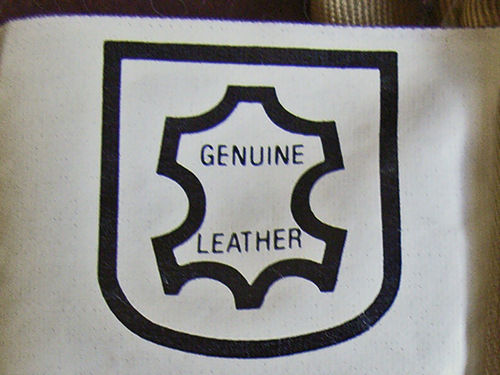
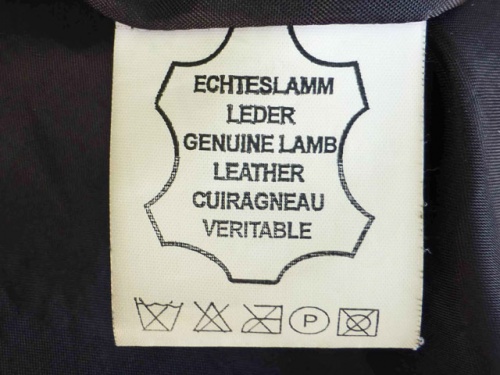

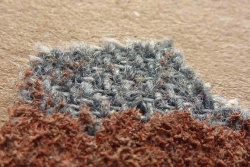

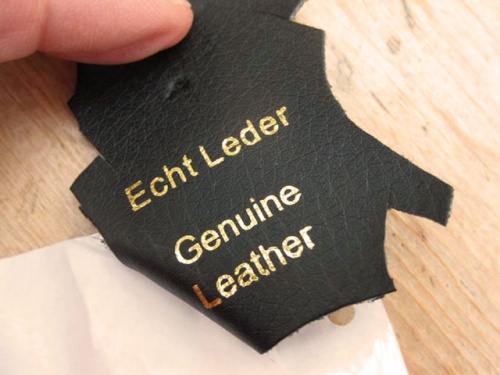
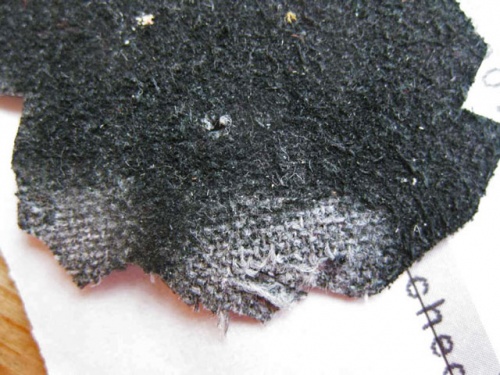
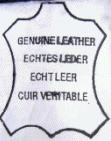
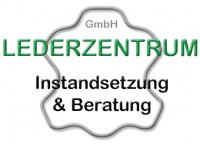

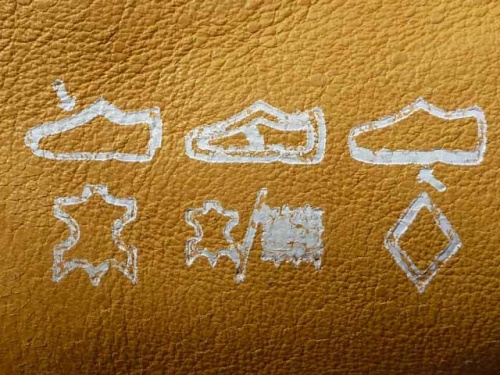
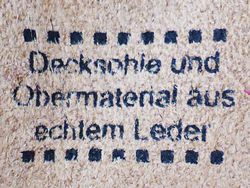







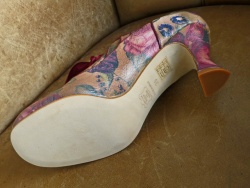
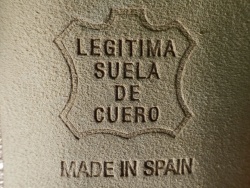
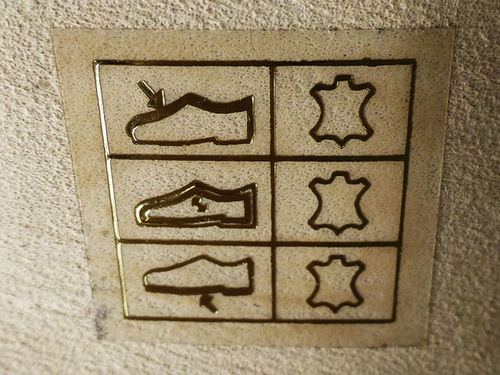
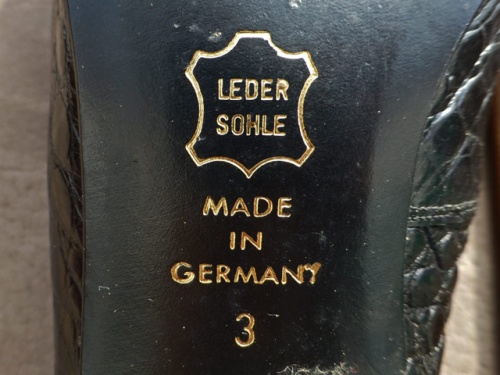

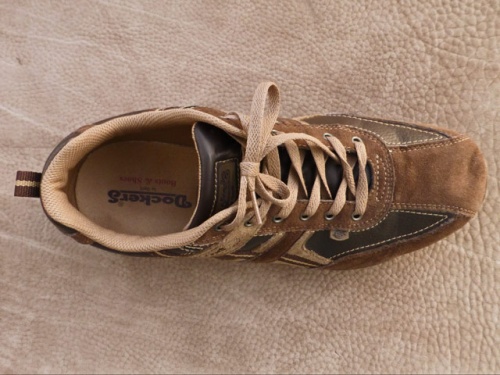
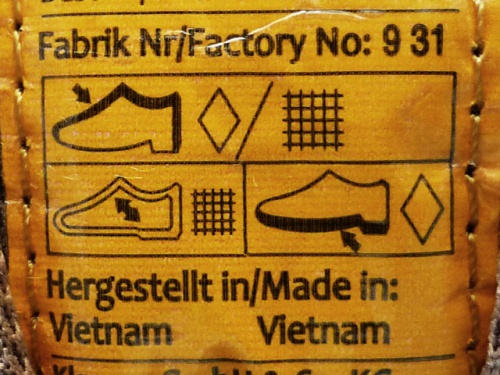
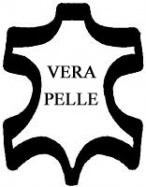
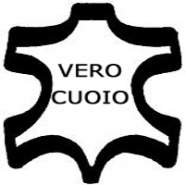

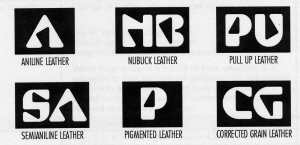

 a kotori web solution
a kotori web solution